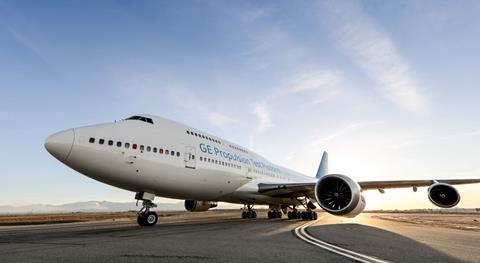GE Aerospace is partnering with NASA to carry out a series of flight tests designed to improve the industry’s understanding of contrails.
To be performed over the week commencing 18 November, the flights will see NASA’s Gulfstream G-III research aircraft trail GE’s Boeing 747 flying testbed and scan its wake with LIDAR sensors.

This will enable NASA generate a 3D image of the contrails to better characterise how they form and behave over time, the partners state.
Called CODEX - contrail optical depth experiment – the project will also mark a new “operating method” for the flying testbed, GE says, “expanding [its] capabilities” ahead of future flight tests of new engine technologies being developed through the CFM International RISE open-fan programme. GE is a partner in CFM alongside Safran Aircraft Engines.
“GE Aerospace is proud to once again team up with NASA to be at the forefront of innovation for the future of more sustainable flight,” says Arjan Hegeman, the propulsion specialist’s general manager of future of flight.
“Understanding how contrails act in-flight with the latest detection technology is how we move innovation forward.”
At July’s Farnborough air show, chief technology officers from across the aviation industry called for more government research programmes into the sector’s non-CO2 climate effects, including contrails, nitrogen oxides, sulphur, aerosols, and soot.
GE’s SATAVIA subsidiary – acquired earlier this year by its Aerospace Carbon Solutions business – is also working alongside NASA and Germany’s DLR aerospace research centre on atmospheric forecasting to identify conditions favorable for studying contrail formation.
Ultimately these studies, to be validated by flight-test data, will allow better prediction and forecasting of contrail forming regions, potentially allowing aircraft to be routed around such areas.































